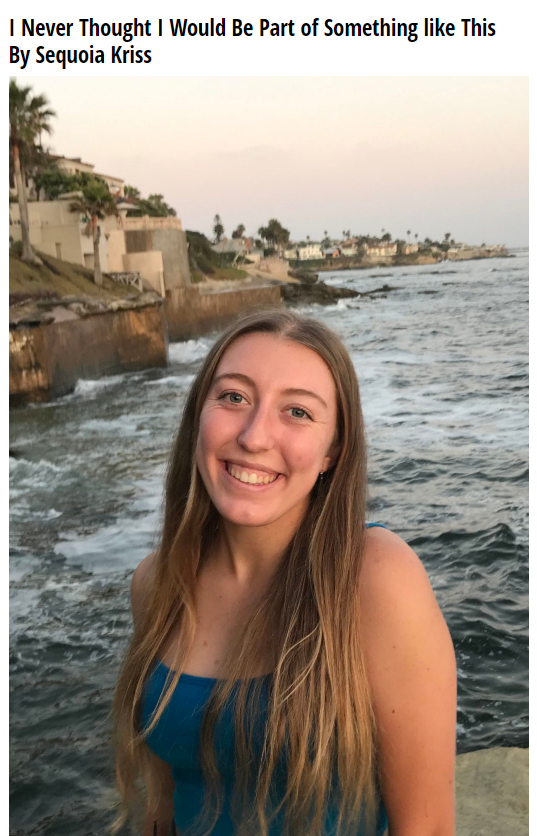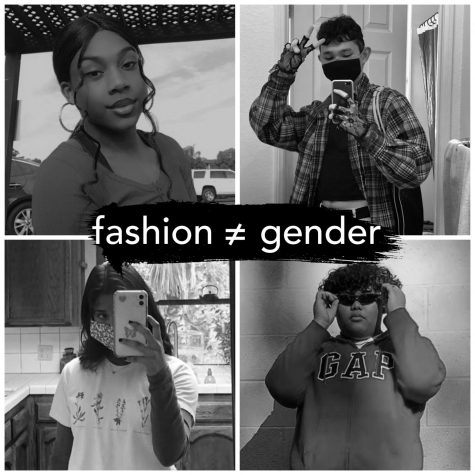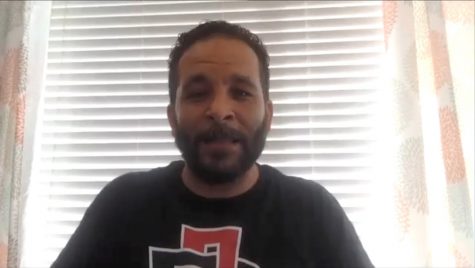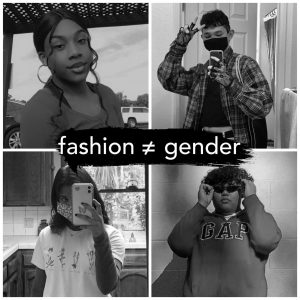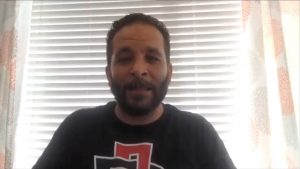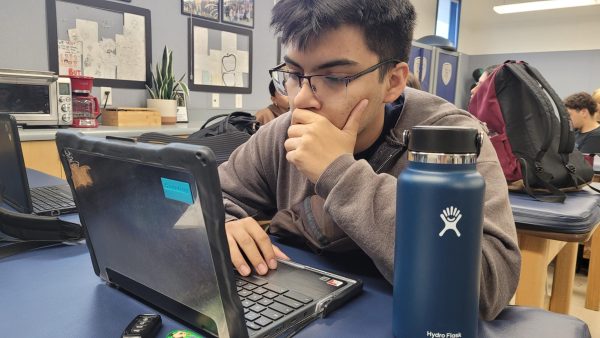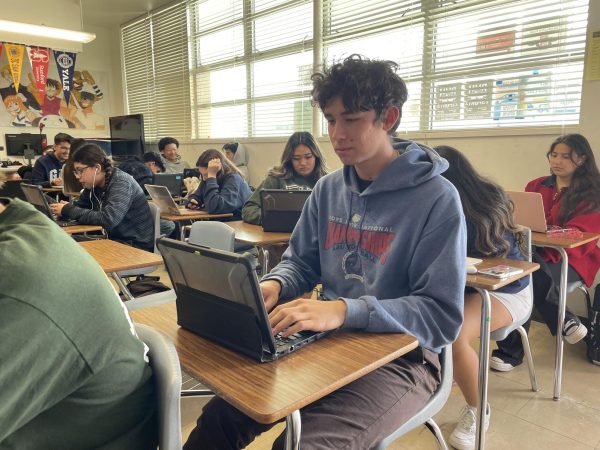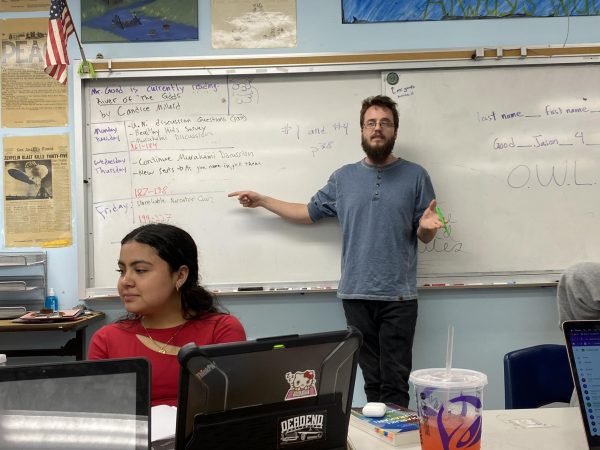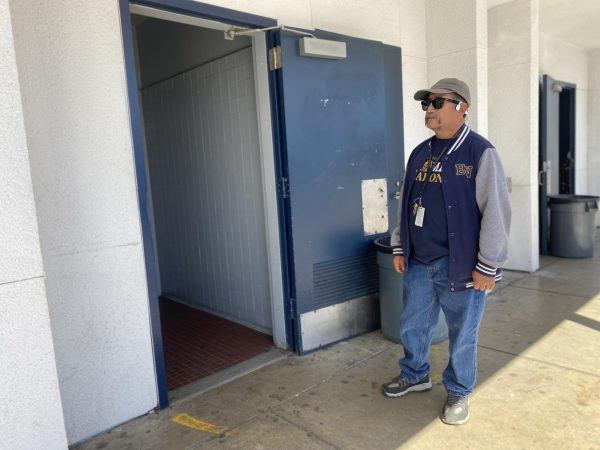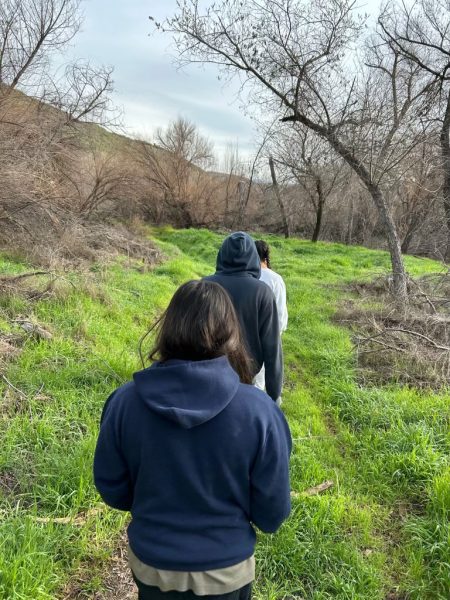Writing for justice
Student activist publishes essay on racial injustice
Sourced from rethinkingschools.org
BVH senior Sequoia Kriss wrote an essay about Black Lives Matter that was published in rethinkingschools.org. She is passionate about social and racial justice.
February 5, 2021
“All over my feed was a picture of an African American teenage boy named Ahmaud Arbery. I saw the video recording of his death—a young boy, on a run, getting shot. Tears shed from my face instantly. I had a million questions running through my brain but in that moment, I knew that I could not stay silent,” Bonita Vista High (BVH) senior Sequoia Kriss earnestly wrote.
These heartfelt words come from S. Kriss’ essay published in Rethinking Schools, an advocacy organization and magazine publication that aims to infuse social justice and activism into public education. Titled “I Never Thought I Would Be Part of Something like This,” S. Kriss’ essay details the personal impact that the Black Lives Matter movement has had on her life.
However, she wasn’t always so outspoken. Before S. Kriss considered herself an activist, much of her childhood was spent being “painfully shy,” as explained by her mother Carla Kriss. She reports feeling proud of her daughter’s transformation from a quiet kid to a vocal teenager.
“She didn’t really start speaking with people until she was probably in 4th or 5th grade. But she always knew what was going on—she had a little checkpoint—so we’re happy to see that she has been using her voice now,” C. Kriss said.
According to S. Kriss, her inspiration to pursue social justice is largely rooted in the environment her parents immersed her in. Her parents’ willingness to openly discuss politics with her from a young age allowed her to learn the importance of using her own voice.
“My parents have always been very vocal about voicing civil rights issues that are occurring [and] making sure that everybody’s equal in America […] So in 2016, when the Women’s March happened, my mom and I both went out and supported that. That was my first glimpse of activism in America,” S. Kriss said.
C. Kriss describes how she was “very open” with S. Kriss surrounding discussions about justice, which is reflected in S. Kriss’ eventual involvement in the Black Lives Matter movement. In February 2020, the death of Ahmaud Arbery in Atlanta, Georgia made her “upset” and “tearful,” motivating her to take action.
“The death of […] Arbery, who was running and got shot, really hit me hard because as a runner myself, I can’t imagine going on a run and being killed just for running […] That really hurt my heart, and that’s what got me into going into different protests, speaking out [and] writing,” S. Kriss said.
I can’t imagine going on a run and being killed just for running […] That really hurt my heart, and that’s what got me into going into different protests, speaking out [and] writing.
— Senior Sequoia Kriss
In her essay, S. Kriss recounts how being in Advanced Placement (AP) US History teacher Don Dumas’ class also pushed her to become involved in Black Lives Matter. Activism, social justice and an emphasis on “unsung heroes” comprise a major part of the curriculum Dumas teaches.
“[These unsung heroes are] people who aren’t on US currency—people that don’t have schools named after them or statues built of them. But [these are] people that fought for true justice and equality,” Dumas said. “I can’t say that it’s any one lesson that I taught [that inspired Sequoia], but it’s probably more of a culmination of a yearlong emphasis and celebration of people who aren’t in powerful positions who manage to have a positive impact on their communities.”
Throughout the year, Dumas explains how S. Kriss appeared especially engaged when learning about American social movements. By studying these movements, students in Dumas’ class were given the opportunity to compare current events with past events.
“Sequoia always seemed to take even more interest in those kinds of social movements when we learned about them. So I knew that she was interested in issues of justice and equality just by the way that she would really perk up in class when we studied those issues,” Dumas said.
Outside of the classroom, Dumas has seen S. Kriss’ willingness to express her sentiments through protest. This is one of the reasons why Dumas sent her an email to inform her about the opportunity to get an essay published in Rethinking Schools. He felt her endeavors would fit into one of the publication’s prompts that specifically focused on Black Lives Matter.
“I spoke at a Black Lives Matter rally, and Sequoia was there in attendance—holding the sign and marching in the streets. […] She is an activist,” Dumas said.
After she emailed Rethinking Schools editor Ari Bloomekatz about her contributions to the community and Dumas’ reference, S. Kriss began the writing process. She reports that she felt a wide range of emotions—both positive and negative—while drafting the essay.
“I was very sad [while writing the essay]. I never saw myself having to write an essay or speak out about equality in America because we learned so much about it in school […] I was also excited […] to write about something I was so passionate about and happy that I would be able to share the message with more people,” S. Kriss said.
S. Kriss describes how she wanted her essay to convey the message that true equality in the United States hasn’t been achieved yet and that it’s imperative to continue striving towards it. She believes that diversity should be appreciated rather than undermined.
“I wanted to enlighten people on the fact that this has been going on for so many years now […] Everybody learned about slavery when they were in elementary and high school, and we’re still having to change history. So I wanted to inform people to treat everybody with kindness and respect no matter what skin color, religion [or] gender they identify as,” S. Kriss said.

Reflecting on the process as a whole, S. Kriss acknowledges that there were certain challenges she encountered when writing the essay, such as the allotted word count and communication difficulties.
“[The essay] could only be 305 words, so it was difficult for me to find the right amount of words to say what I wanted to convey but also not pass the word limit […] It was difficult communicating over email [with the editor] because it was a lot of back and forth,” S. Kriss said.
As soon as her essay was officially published, S. Kriss sent it to her grandparents and family members and posted it on her various social media accounts. While reading her essay, C. Kriss recounts how she contemplated how it could relate to her experiences as an elementary school teacher.
“The whole thing put together really made me think: Are we doing enough as educators? And personally what I do, what does my school site do [and] what can people share. It just brought a lot of emotion,” C. Kriss said.
Looking back at the final product, S. Kriss feels “pleased” with her work and believes that it represents an effort to make the community at-large more informed of how history repeats itself.
“I’m [pleased] with the format that I structured it and the message that was brought across, [as well as] how I tied it into my school. I discussed in it how I remember looking at the photos in black and white protests and how I’m metaphorically in those photos because I’m fighting for the same things,” S. Kriss said.
Meanwhile, Dumas admires the courage that it took for S. Kriss to convey her thoughts on social justice in such a public fashion.
“I was totally happy for her because it’s not easy to put yourself out there. It’s not easy to put yourself in a social movement—to go out there and be an activist. And then to reflect on it, write on it [and] submit it to an international publication [could] be intimidating,” Dumas said.
From S. Kriss’ perspective, one of the most fulfilling parts of the entire process was exposing what she sees as a flawed status quo to a diverse range of individuals. She explains how she hopes for her essay to resonate with young people and increase their awareness of racial injustice.
“It really makes me happy that I can post it on social media, send it to my grandparents and try to get as many people informed as possible. I feel like having somebody from our high school [being engaged in this] can really help other teenagers learn about what was going on and what’s still going on,” S. Kriss said.

